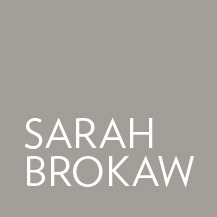When clients ask me how I come up with exercises for them to do at home, I always respond by saying, “Research is ME-search.” If I hear about a tip or trick for living a healthier, happier life—such as eliminating refined sugar for a week to help detoxify my body, or spraying orange-infused oil in my bedroom to enliven my senses—I start by trying it myself. Only if I find myself detoxified and enlivened do I recommend the tips to friends or clients.
That was the case recently, when friends and colleagues recommended I try meditation. Based upon empirical evidence and positive reviews from my peers, I thought that meditation might be useful for my clients. I followed up by doing my “me-search” and downloaded an app called “Headspace,” which offers simple guided meditations, starting with 10 minutes and working up to 20 minutes. The meditations are led by a man named Andy, who walks you through the exercise for the day in a sexy, velvety, British voice as you sit upright in a chair or on the floor.
The competitive, goal-oriented side of myself couldn’t wait to complete the levels on the app. After I had completed each level, rather than reveling in a sense of calm, I found myself raising my hands in the air and saying, “I did it!” Also, I realized that sitting down and listening to Andy’s voice to help me find my equanimity didn’t seem practical for my most rushed time of day, the morning, when my two dogs are gearing up to go out and run, my son is jumping up and down in his crib and I’m trying to prepare breakfast for all three. I’m not saying that meditation didn’t work for me—it did. It’s just that I realized I needed to find other ways to find a sense of equanimity.
So I developed this routine for myself, and I tried it for one week to see if it helped me feel less flustered, anxious and exhausted. Using the same structure as the Headspace series, I created my own “active meditation” routine and divided it up into three levels: Level One has five things to do in two-minute intervals within a 10- to 15-minute timeframe. Level Two features five things to do in three-minute intervals within a 15- to 20-minute timeframe. Level Three has five to 10 things to do within a 20- to 25-minute timeframe. I was careful to only choose tasks that required the allotted amount of time.
Here’s what Level One looked like for me. Since my son gets up around 7:15 a.m., I set my alarm for 6:50 a.m. I got out of bed immediately after the alarm—no checking my phone, no snooze button. Then, I did each the following actions for two minutes.
1. Brush my teeth.
Since two minutes is the dentist-recommended amount of time to brush, this lets me start the day feeling super-virtuous.
2. Do jumping jacks.
Take it from me: You’ll want to use the first 15 seconds of this exercise to put on a bra. Also, full disclosure: If I’m not in a jumping-jack kind of mood, I just stretch for two minutes.
3. Steam my blouse.
Because I use a portable steamer, it only takes two minutes to get a crisp white blouse to start the day.
4. Wash and dry my face.
If you’re one of those women who feels naked without her makeup, this is a perfect time to apply some lipstick or mascara.
5. Drink a warm glass of water with lemon.
And voila! I found a sense of equanimity by mindfully proceeding through this simple routine, leaving me ready to embrace my dogs and child with the energy and enthusiasm that all three needed and deserved.

